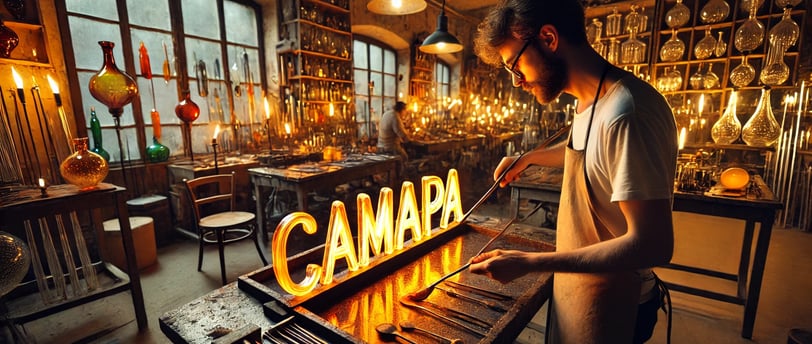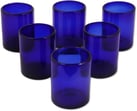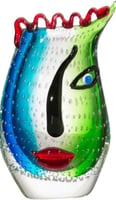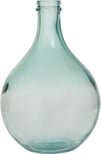Hand-Blown Recycled Glass Vases: A Sustainable Way to Showcase Your Flowers
Hand-Blown Recycled Glass Vases. Hand-blown recycled glass vases exemplify the nexus of sustainability, craftsmanship, and functional beauty. They transcend their role as mere containers for flowers, emerging instead as artistic testaments to the transformative potential of discarded materials.
ENTERTAINMENT
Camapa Editorial
11/12/20245 min read


The allure of a handmade artifact lies in its capacity to encapsulate both human ingenuity and cultural resonance, and hand-blown recycled glass vases epitomize this duality with remarkable elegance. These meticulously crafted pieces serve not merely as vessels for floral arrangements but as embodiments of sustainability, artisanal heritage, and a celebration of the imperfect beauty inherent in handmade work. As such, each vase becomes an aesthetic statement that harmonizes the values of environmental consciousness with the timeless tradition of artisanal craftsmanship.
The Art of Hand-Blown Glass
The craft of hand-blowing glass is an intricate art form, demanding a sophisticated combination of patience, technical acumen, and a profound comprehension of the physical properties of molten glass. The process involves heating recycled glass to its molten phase, subsequently manipulating the viscous material using iron rods while simultaneously blowing air into it to achieve the desired forms. This artisanal method necessitates not only technical proficiency but also a cultivated sensibility for artistic nuance. Each hand-blown vase emerges as a singular work, adorned with subtle idiosyncrasies that distinguish it from mass-produced counterparts.
The resulting artifacts embody the artisanal narrative of their makers, imprinted with the expertise and creative intuition of the glassblowers. The entire process—from the initial gathering of molten glass to the precise twists and movements of the artisan’s tools—imparts a distinct individuality to each piece. This process reflects an adherence to age-old techniques that have been refined through successive generations, with artisans integrating influences from nature, architecture, and cultural history to enrich their designs. The emergent product is thus more than a utilitarian object; it is a physical narrative of artistic labor, material behavior, and cultural heritage.







Sustainability at Its Core
The choice of recycled glass as the raw material for these vases is a profound statement on sustainable living and material conservation. By reprocessing discarded glass, artisans effectively reduce the demand for virgin raw materials, thereby minimizing both resource extraction and the energy consumption typically associated with traditional glass production. Each recycled glass vase represents a trajectory of renewal, embodying the concept of material reincarnation and signifying the potential for beauty to emerge from what would otherwise be industrial waste.
Moreover, these vases contribute meaningfully to a holistic approach to sustainability when paired with locally sourced floral elements. When consumers opt for fresh-cut flowers from local markets or their own gardens, the environmental impact of transport and distribution is substantially mitigated. The interplay of locally-sourced flora with recycled glass vessels reinforces an overarching ethos of ecological conscientiousness. This synergistic combination accentuates the natural aesthetics of both the flowers and the vase while promoting a responsible and environmentally integrated lifestyle.
The energetic efficiencies of working with recycled glass further underscore the material’s suitability for sustainable artisanship. Recycled glass requires significantly lower temperatures to melt compared to newly produced glass, which in turn reduces carbon emissions and overall energy consumption. Artisans, by leveraging remnants and scrap glass, ensure that the production process is inherently resource-efficient and conserves energy. This careful stewardship of resources transforms each hand-blown vase into not just an artistic object, but also a symbol of environmentally mindful production practices aimed at long-term ecological preservation.
Why Hand-Blown Recycled Glass Vases Are Perfect for Flowers
Floral arrangements, whether minimalist or opulent, demand an appropriate medium that elevates their innate beauty, and hand-blown recycled glass vases provide an ideal setting. The artisanal nature of these vases enhances the visual dynamics of floral displays, offering a transparency that allows light to dance across the glass and amplify the vivid colors and textures of the blooms. The unique contours and subtle asymmetries that result from hand-blowing imbue each vase with an organic, almost fluid form that resonates with the natural lines of flowers.
The diversity in shape and dimension among hand-blown vases offers expansive creative latitude for floral presentation. From tall, elegant vessels that lend themselves to long-stemmed flowers to bulbous forms that seem to cradle shorter, fuller arrangements, the unpredictable geometries are inherently versatile. This versatility encourages innovative arrangements that align with varied aesthetic preferences, whether one seeks understated elegance or a more dramatic visual statement. Each piece, with its distinctive silhouette, serves to amplify the inherent qualities of the flowers it contains.
Furthermore, the interplay between light, recycled glass, and the vibrant hues of flowers contributes to an enriched aesthetic experience. The subtle imperfections—air bubbles, swirls, and color gradations—present within hand-blown recycled glass introduce layers of visual interest that mass-produced glassware cannot replicate. These irregularities enhance the reflective and refractive qualities of the glass, which in turn enriches the display of the flowers, highlighting their textures and colors in nuanced ways that transcend mere decoration.
Bringing Handmade Beauty Into Your Space
The integration of a hand-blown recycled glass vase into domestic or public interiors serves to enrich the environment by introducing an object laden with artisanal character and environmental significance. Placed in areas where natural light is abundant, such as near a window, these vases harness and diffuse sunlight, creating shifting plays of light and shadow that imbue a space with a sense of dynamic, living beauty. The artisanal imperfections in each vase contribute to its narrative quality, making it an evocative focal point that invites closer inspection and appreciation.
Even when not in use as a vessel for flowers, these vases serve as sculptural accents that can enhance the aesthetic cohesion of a room. Arranged in clusters, they create a visually compelling tableau that underscores their craftsmanship and the ingenuity involved in their making. The varied hues, forms, and sizes of different vases can be displayed together to evoke a sense of curated artistry, transforming any interior into an ode to thoughtful design and sustainable living. Such arrangements can facilitate a gallery-like atmosphere, inviting viewers to reflect on the symbiotic relationship between art and environmental responsibility.
For individuals who appreciate biophilic design elements, the natural forms and subtle colorations of these vases present an opportunity to harmonize their living spaces with elements reminiscent of the natural world. The organic silhouettes and recycled origins of the glass create an intrinsic link between the object and the environment, fostering a palpable connection to nature. Whether filled with seasonal flowers, simple branches, or left empty to highlight their sculptural qualities, these vases effortlessly adapt to both contemporary and traditional decor styles, thereby enhancing the versatility and aesthetic harmony of any setting.
Conclusion
Hand-blown recycled glass vases exemplify the nexus of sustainability, craftsmanship, and functional beauty. They transcend their role as mere containers for flowers, emerging instead as artistic testaments to the transformative potential of discarded materials. By incorporating such vases into one's home, one not only introduces a visually captivating element but also participates in an eco-conscious narrative that honors both artisanal skill and environmental stewardship. The enduring beauty of these vases ensures their appeal as more than a fleeting trend; they are timeless artifacts designed to be cherished and passed down as heirlooms.
Whether used to display a vibrant bouquet or appreciated as a standalone piece, each hand-blown recycled glass vase conveys a story rich with creativity, heritage, and environmental mindfulness. Choosing such a piece represents a deliberate commitment to a thoughtful, artful approach to living that respects both the natural world and the labor of skilled artisans. These vases are not simply utilitarian objects—they are enduring symbols of a conscientious and aesthetically engaged lifestyle, demonstrating that art and sustainability can, indeed, coexist harmoniously.
Camapa Editorial
camapaeditorial@gmail.com
© 2024. All rights reserved.
Our mission at Camapa Editorial is to explore, analyze, and present insights within these fields in a way that both educates and inspires further inquiry. Whether delving into groundbreaking scientific discoveries, examining the intricacies of athletic performance and emerging sports, or exploring the multifaceted world of entertainment, Camapa Editorial aims to be a trusted guide in your journey of learning and exploration.
